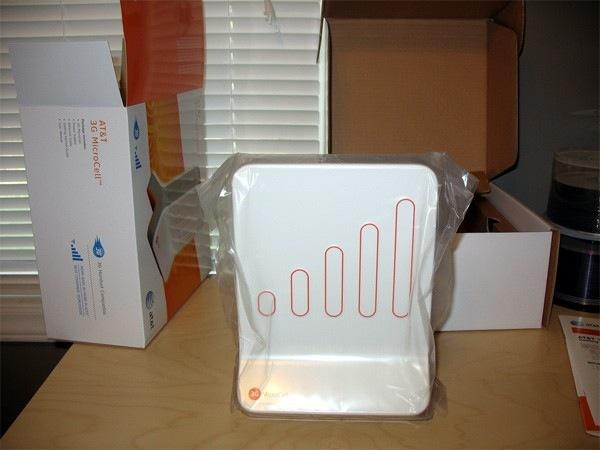Well, it’s official. AT&T has indeed soft-launched its own femtocell, dubbed the 3G Microcell, for a trial roll-out in Charlotte, NC. (For more on that, click here for Aaron’s post or hit the newly launched MicroSite here.)
Yeah, okay — this news may not seem exciting to some people, and maybe you’re wondering why you should care. Well, if you’re a wireless subscriber who deals with annoying dead zones at home or at work — then yes, you should care. Here’s why.

The Pros
I have a friend who lives across the country. She’s my best friend, actually, but I used to dread calling her. She’d always have me wait while she ran to the window just to get a measly bar or two. When we had loads to chat about, she’d have to run out to her backyard for blip-free conversation. I always felt guilty gabbing with her, knowing she was freezing outside. Things got better when she switched carriers, but if she’d known about femtocell, she might not have had to jump ship and ditch her favorite smartphone.
In a nutshell, a femtocell device is like your own personal cell phone tower. It hooks up through broadband internet to jazz up voice and data signals, even in poor reception areas (like your basement, bathroom or office cubicle).
AT&T is the last of the four major carriers to implement some sort of reception enhancer. Its version of femtocell is like a 3G signal booster on steroids that pumps out 5 full bars of signal for any of the carrier’s 3G phones, including the iPhone, Samsung Eternity, and Pantech Matrix. And for those who care about such things, the MicroCell itself is actually a pretty darn cute piece of gadgetry.
The Cons
The MicroCell unit is selling for $150, and customers who want unlimited femtocell calling have a choice of tiered plans based on whether it’s bundled with other AT&T services or not. For most wireless subscribers, however, the fee ends up being $20 per month.
For me, this where things get hinky. Femtocell users are basically making up for spotty coverage by using their own internet bandwidth, which they’re already paying for. This is why those service plans are generally inexpensive or even free. In the AT&T pricing structure, however, MicroCell customers are shelling out some real cabbage, and that doesn’t even include the actual calling, data or text plan.
Conclusion
If femtocells take off, customers will get the reception they need, and carriers stand to save a lot of money and effort by not having to add cell towers everywhere or upgrade systems to handle increased loads. It should be a win-win situation. So, you would think there’d be incentives for this. Instead, AT&T’s wrong-headed approach charges customers a lot for providing themselves with the coverage that it can’t.
As an iPhone user on AT&T, I’m really agog over this. The company owes a lot to Apple and the iPhone for growing its subscriber base. And yet MMS is taking forever to arrive, and there’s no hint when tethering might be available. 3G reception is also spotty in several major metropolitan areas. (Hmm, could frequent searches for signal have anything to do with the high-velocity battery drain that many people are reporting? Just a guess…)
Now, adding insult to injury, it looks like most AT&T 3G customers will pay the highest consumer femtocell fees in the industry, just to get the coverage that those expensive voice and data plans were supposed to deliver in the first place. It’s like getting charged twice for the same cell coverage, and that’s just crazy.
When DSLReports.com asked about the pricing, AT&T’s Seth Bloom responded with, “One of the things we are trialing [in Charlotte] is the pricing structure, as you'd expect from a consumer trial.” (Yikes. Is it me or was that actually a little snarky?)
While I do hope AT&T rethinks this, somehow, I kind of doubt it will. In the past, Big Blue has proven that it will grab as many pennies as it can get away with. In the mean time, the 3G MicroCell will keep rolling along. And believe it or not, I’m actually glad that people who are desperate for an indoor signal will have an alternative, even if it is a wallet-gouging option. I know a few people who would still jump at this, if only to cease having to schlep outside to make calls. Sadly for AT&T, these are the same people who would run — not walk — to the competition whenever the iPhone (or whatever gadget of choice) shows up on another network.

[via EngadgetMobile, FierceWireless, DSLReports, BoyGenius Report]